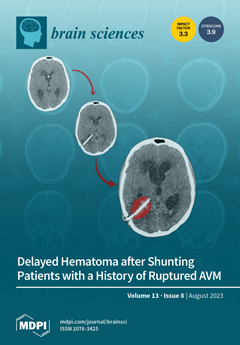Open AccessSystematic Review
Pharmacological Treatment of Alcohol Cravings
by
Matheus Cheibub David Marin, Maria Olívia Pozzolo Pedro, Giuliana Perrotte, Anderson S. Martins-da-Silva, Dangela L. S. Lassi, Israel Kanaan Blaas, Fernando Ikeda Castaldelli, Maria Beatriz Brisola dos Santos, Guilherme Trevizan Kortas, Marcela Waisman Campos, Julio Torales, Antonio Ventriglio, Cintia de Azevedo-Marques Périco, André B. Negrão, Kae Leopoldo, Arthur Guerra de Andrade, André Malbergier and João Maurício Castaldelli-Maia
Cited by 2 | Viewed by 2282
Abstract
(1) Background: The treatment of substance addiction is challenging and has persisted for decades, with only a few therapeutic options. Although there are some recommendations for specific treatments for Alcohol Use Disorder (AUD), there is no specific medication used to treat alcohol cravings,
[...] Read more.
(1) Background: The treatment of substance addiction is challenging and has persisted for decades, with only a few therapeutic options. Although there are some recommendations for specific treatments for Alcohol Use Disorder (AUD), there is no specific medication used to treat alcohol cravings, which could benefit millions of patients that are suffering from alcoholism. Cravings, or the urge to use drugs, refer to the desire to experience the effects of a previously experienced psychoactive substance. (2) Methods: We included original studies of alcohol abuse or dependence extracted from a controlled, blind, pharmacological treatment study which presented measures and outcomes related to alcohol cravings. (3) Results: Specific drugs used for the treatment of alcoholism, such as Naltrexone and Acamprosate, have had the best results in relieving craving symptoms, as well as promoting abstinence. Baclofen and anticonvulsants such as Gabapentin and Topiramate have shown good results in promoting abstinence and the cessation of cravings. (4) Conclusions: Specific drugs used for the treatment of alcoholism to obtain the best results can be considered the gold standard for promoting abstinence and relieving cravings. Anticonvulsants and Baclofen also had good results, with these medications being considered as second-line ones. Varenicline is an option for alcohol dependents who also concomitantly ingest tobacco.
Full article
►▼
Show Figures






